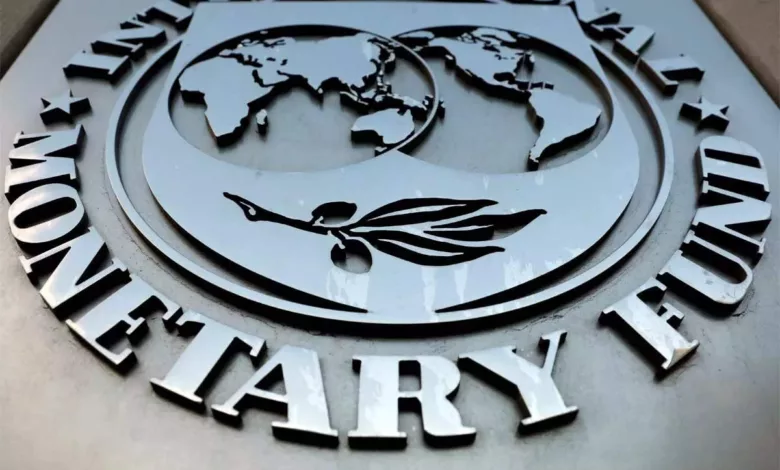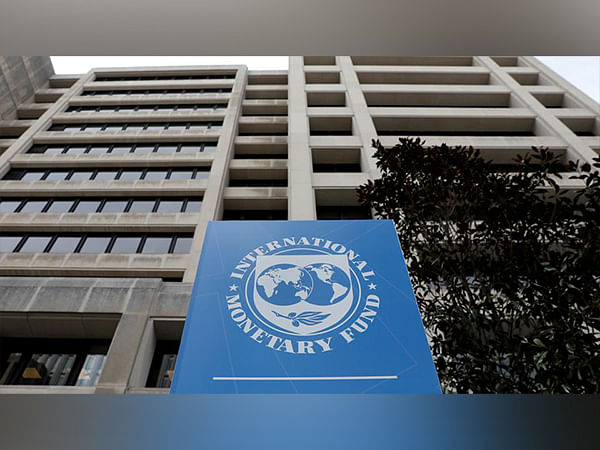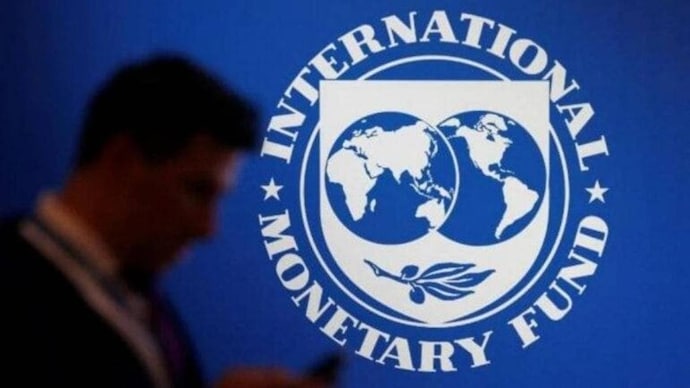IMF anticipates a global economic recovery in 2023, but it will be modest.

The IMF anticipates that if China keeps easing its trade restrictions and Russia’s crisis in Ukraine does not get worse, global economic growth will start to pick up later this year, and a global recession may be avoided.
IMF managing director Kristalina Georgieva voiced hope on Thursday that the recent round of downgrades to global growth may be coming to an end and that an economic upswing may pick up speed in 2019. She told reporters during a press conference at the IMF’s headquarters in Washington that the storm clouds threatening the global economy would soon clear up.
The IMF predicted in October that global production would decline from 3.2% in 2022 to 2.7% in 2023. It is anticipated that the IMF will announce its updated global predictions later this month. “We believe that we have hit rock bottom,” Georgieva stated. “We will hopefully observe a turnaround in the trend toward a stronger growth trajectory in 2024” before the end of 2023. Georgieva, despite her optimism, cautioned that 2017 would be a “difficult year” and that the world economy remains precarious. She pointed out that the cost of living problem is still ongoing and that inflation is still persistently high.
Georgieva claimed that it was hard to foresee upcoming crises and that the global economy was increasingly vulnerable to shocks. It is particularly difficult to foresee how Russia’s war in Ukraine will turn out, and it is also uncertain how long labor markets will be able to hold up against rising interest rates. To slow down the fastest-rising inflation in decades, central banks throughout the world, including the Federal Reserve, are boosting borrowing prices. To keep price rises in check, the Fed in the United States is actively attempting to slow the economy and the labor market.
However, Georgieva claimed that worries about a global energy shock that might cause a recession had not come to pass. And because it just decided to remove its lockdown rules to stop the coronavirus from spreading, China, which had implemented a rigorous “zero-COVID” policy for the previous two years, is prepared to contribute once again to global growth this year.
The most crucial thing, according to Georgieva, is for China to continue on its current trajectory and not back away from the reopening. The managing director was upbeat about the prospect of a “soft landing” for the American economy and said that even if one did happen, it would probably be brief. Georgieva highlighted that following a time in which there was an excessive desire for things that were in limited supply, consumer demand in the United States was once again turning to services.
The shifting balance of power in Congress may cloud this year’s chances, as Republicans have committed to fighting Democrats over spending cuts or other concessions in exchange for raising the country’s borrowing threshold. Despite Republican comments that they are willing to let the US default on its debt, Georgieva said she was certain that this outcome, which would be terrible for the global financial system, would not occur. Debt limit negotiations are “typically quite contentious,” according to Georgieva. “History tells us that a solution will be found in the end.”
Even though established economies are ready for recovery, many developing nations still face the possibility of recessions or defaults due to their high debt loads. The World Bank warned of a “crisis” threatening emerging nations earlier this week as it revised its prior prediction of 3% to show that this year’s global growth would slip to 1.7%.
According to the International Labor Organization (ILO), pandemic spillover effects and “a series of simultaneous and overlapping crises” made worse by the crisis in Ukraine have fueled inflation, leading to a decline in real wages in many nations throughout the world. The inflation of food and energy has the most impact on households. While slower economic development is also limiting the need for labor since hiring decisions remain unclear,
Oil rises on confidence about the world economy.
The assumption that US inflation and earnings data, due out on Thursday, will reflect a solid economy and a slower rate of interest rate hikes resulted in a slight uptick in global stocks on Wednesday. Economists believe that if inflation is lower than projected, the dollar will fall, making oil less costly for clients using foreign currencies and thus increasing demand. China, the world’s top oil importer, reopened its economy with the relaxation of onerous COVID-19 constraints, which contributed to the market’s optimism.
On Wednesday, there was a little uptick in global shares due to the belief that the US inflation and earnings data, which will be released on Thursday, will demonstrate a healthy economy and a slower rate of interest rate hikes. Economists predict that if inflation is lower than anticipated, the currency will weaken, making oil less costly for consumers using foreign currencies and boosting demand. The market’s optimism was partly ascribed to China, the largest oil importer in the world, reopening its economy after the COVID-19 restrictions were lifted.
However, because of the increased demand and price of commodities like oil, the reopening of China may make the story of global inflation more complex. This might potentially have an impact on the Fed and other important central banks. The December jobs statistics reinforced expectations that the Fed can control growing inflation without plunging the nation into recession. The data revealed that wage growth was slowing down while unemployment rose to a multi-decade low. It “looks more like a soft landing,” said Torsten Slok, chief economist at Apollo Global Management.
Optimism about a smooth landing for the global economy as 2023 gets underway
Even though the world economy is starting the New Year in a more upbeat tone, there is no assurance that this trend will continue through the year 2023. Several things, including China’s economy reopening earlier than anticipated, a warmer winter in energy-strapped Europe, and a sustained decline in US inflation, are working together to lift some of the doom that overshadowed financial markets at the end of 2022 and fuel hopes the world can avoid a recession. Data made public on Friday revealed that the UK economy surprisingly expanded in November and that Germany’s GDP will not collapse by the end of 2022.
However, given that the Federal Reserve, European Central Bank, and several other peers are still pushing for higher interest rates, the possibility of a downturn later in the year cannot be ruled out, particularly if inflation turns out to be persistent and doesn’t decline as much as central banks hope.
Jan Hatzius, the lead economist of Goldman Sachs Group Inc., stated during an Atlantic Council-sponsored webinar on January 11 that “there is a limited road to a gentle landing. It will be challenging for politicians to determine how much restraint is necessary to do that. He, as well as investors, are placing a wager on their success. Corporate bond prices are climbing, and emerging market shares are soaring on expectations that the global economy could survive the most terrifying inflation in decades without experiencing a slump.
Price pressures are reducing globally, partly as a result of slower global development but also as a result of supply chains that have been untangled by the epidemic and Russia’s invasion of Ukraine. Following a peak of 9. 1% in June, US consumer prices increased 6.5% in December in comparison to a yr earlier.
Consumers’ buying power will be supported by the decline in inflation after spending much of the previous year being squeezed by rising costs, particularly for necessities like electricity, food, and rent. Additionally, it will enable central banks to curtail rate hikes, allaying investor concerns that aggressive policymaking will “break something” in the markets.
According to trade in the federal fund’s futures market, Fed Chair Jerome Powell and his colleagues are anticipated to move to a quarter-point rate rise at their policy meeting on January 31–February 1. That would come after a half-point hike in December and four increases of 75 basis points earlier. The Fed’s sharp rate hike has been reversed as a result of the step back, which also lessens the pressure on other central banks to follow suit with rate hikes that slow the economy.
Megan Greene, the chief global economist at the Kroll Institute, declared that “we have reached the pinnacle of dollar strength. Additionally, the labor markets continue to be extraordinarily resilient, and corporate and household budgets are still in quite a good shape. A recession in Europe was widely believed to be inevitable when the cost of energy, especially natural gas, soared last year. No longer, according to Goldman’s Hatzius, who now sees the area averting a slump.
You may credit the mild winter for the rise in supply and the expansion of providers required to replace lost imports from Russia. As a result, the eurozone’s economy has performed better than expected. Despite the country’s heavy reliance on Russian energy, Germany’s industrial production increased somewhat in November. Robert Habeck, the minister of economy for Germany, said earlier this month that “as far as we can determine, the fear of a thorough economic collapse, a fundamental breakdown of European industry, has been averted.
China, a significant market for German goods, should gain from abandoning its COVID-Zero strategy in favor of liberalizing its economy. Following the demise of COVID Zero, Wall Street analysts are actively updating their predictions for China’s development. Due to a quicker-than-expected reopening, Barclays increased its forecast for the gross domestic product growth rate to 4.8% for 2023 from 3.8%. Instead of the prior prediction of 4.4%, Morgan Stanley now anticipates growth of 5.7%.
The forecast for China’s recovery is better than many thought it would be at the end of last year, even though there are still obstacles to overcome. These obstacles include an improving real estate downturn and increased government support. Regarding China’s prospects, Goldman’s Hatzius stated, “We’re now anticipating a sort of V-shaped comeback as we’ve seen in many other economies that have been stopped down due to COVID.
However, because of the increased demand and price of commodities like oil, the reopening of China may make the story of global inflation more complex. This might potentially have an impact on the Fed and other important central banks. The December jobs statistics reinforced expectations that the Fed can control growing inflation without plunging the nation into recession. The data revealed that wage growth was slowing down while unemployment rose to a multi-decade low. It “looks more like a soft landing,” said Torsten Slok, chief economist at Apollo Global Management.
Despite this growing assurance, the World Bank substantially slashed its growth forecasts for the majority of countries and regions this week and issued a warning that further shocks may still cause a recession. Even though the risk has lessened, a worldwide recession is still 70% likely to occur later this year, or in 2024, according to Bruce Kasman, chief economist at JPMorgan Chase & Co. He contends that the Fed and the ECB will likely continue to be overwhelmed by pricing and cost pressures, which will finally bring an end to global expansion.
Edited by Prakriti Arora




